Accessories Make the (Victorian) Man
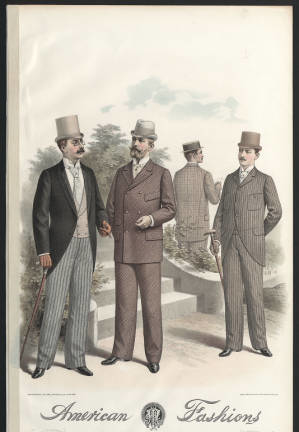
by Virginia Solomon, First published for the May/June 2010 issue of Finery
Modern men have streamlined their attire so extremely that the only accessories ever seen are a handkerchief in the pocket and perhaps cuff links. Nothing else distinguishes one’s class, affluence and style. But in the Victorian/Edwardian Era, the numerous accessories one carried and wore could easily aid the most amateur of detectives in determining the wearer’s status, wealth and (ask any dandy) fashion sense. From head to toe, here is a basic list of accoutrements for the Victorian gentleman.
Victorian men had a dozen hat types to choose from, including bowlers, hombergs and fedoras. Hats came in a variety of brim shapes and were made of silk, felt, beaver fur, angora or straw. Colors were gray, beige, fawn, white and black. Caps also take a definite place in the wardrobe of the well-dressed gentleman and included straw boaters or Panamas for summer. The oriental fez was popular for indoor wear and lounging. For the country, it was fashionable for men to wear soft felt hats with wide brims and straw or woolen styles.
A monocle or pince nez can add panache and style to your look. Framed in gold, these reading glasses were useful, portable, and elegant.
Pipes were used only in the privacy of one’s home during leisure hours; to smoke in public was not the thing for a gentleman.
The cravat (or necktie) varied in style throughout the day. For evening wear, the white tie was de rigueur; while the dark tie or cravat was worn for less formal occasions or as respectable daywear. Cravats, ascots and bowties were made of colorful silks, novelty weaves and softer brocades depending upon the wearer’s taste.
Cravat pins were the single piece of jewelry that a gentleman could wear without exciting undue comment, unless of course the jewel was of inordinate proportions. A small diamond, jewel or pearl was thought proper. The only other acceptable jewelry was a signet or wedding ring. Again, any stone should be small, simple and elegant.
Buttonholes or boutonnières were worn by leisure class gentlemen. This simple addition can set off an elegant suit or compliment one’s neckwear. Fashion dictated carnations, rose buds, or, for dandies, violets.
Handkerchiefs were essential, generally of fine cambric or silk, and always be clean, white and pressed. Monograms were definitely used, although Jeeves felt that they “were only for those people who were in danger of forgetting their names.”
Wallets were made of fine leather or silk set with gilt mounts. Generally a tri-fold, it was kept in the inside breast pocket of the jacket or coat. Keeping a wallet in the pants pocket was considered “uncivilized”.
The pocket watch was indispensable. There were two main styles: the lepine or open face with no cover, and the savonette or hunter watch with a hinged cover that protected the face and crystal of the watch. In addition, one needed a watch chain, Albert chain, vest fasteners and fob. Fobs were often useful items, such as a magnifying glass, mechanical pencil, knife, whistle or compass.
Gloves could be chamois, kid leather or silk. Colors were white for evening, grey for day, and tan leather for riding or driving.
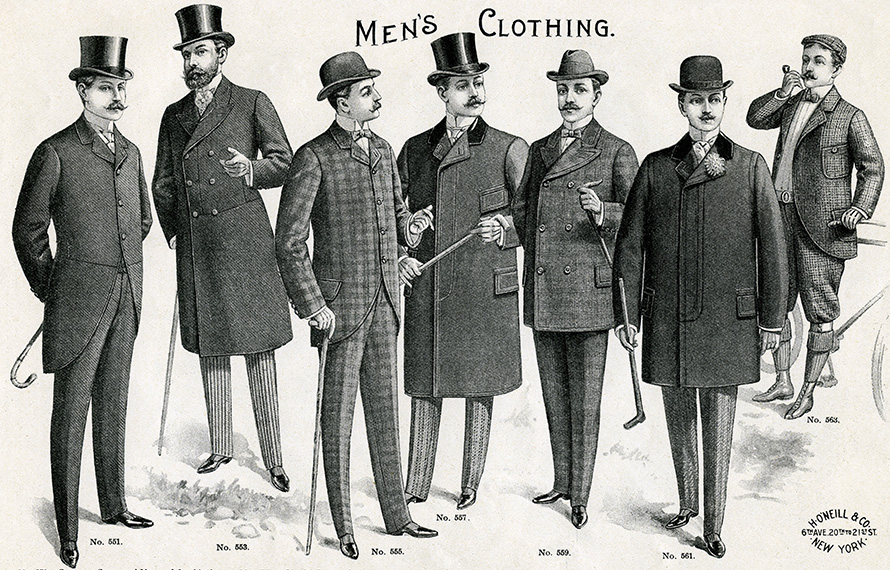
Canes distinguish at a glance the gentleman from the working class. Whether the cane is oak or ebony and the finial of chased gold or carved wood can mark a man’s station in life. Always choose your cane with care and do carry one at all times. For Englishmen, umbrellas were essential most of the year, and should always be black, neat and with a leather handle.
Scents were usually limited to scented hair oil, soaps and bath salts. Limit colognes to natural scents, such as Taylor of Old Bond Street No. 74 Original, with top notes of orange, bergamot and lemon. Two other classics are Victorian Lime, with notes of Citrus, lime, woods and fuchsia, and the ever-present Bay Rum.
Socks were silk knit for gentlemen or wool for the rest of mankind. Sock garters are optional as they are not seen. However, if you wear period silk socks without elastic you will need the double clip sock braces.
Spats, not be confused with sportsman’s or military gaiters, were the ultimate shoe accessory in the late 19th and early 20th century. They were stiff fabric covers attached to the top of the shoe and extending up the lower part of the leg. Spats, especially white ones on highly-polished black shoes, were an important part of a wealthy young man’s dress.
Accessories are a fun to collect and wear, and go a long way to convey the character you’re playing or your own flawless fashion sense.

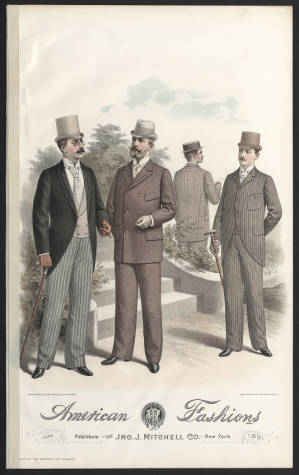
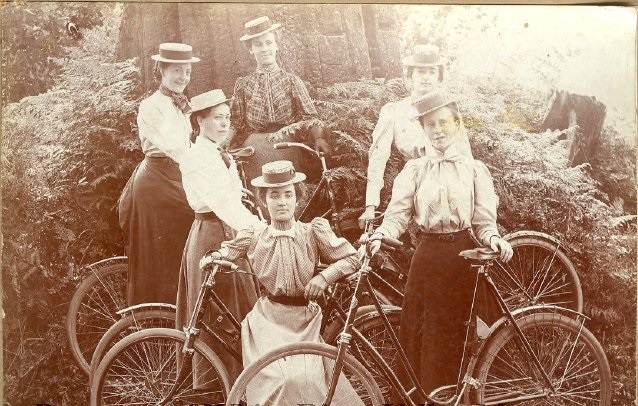
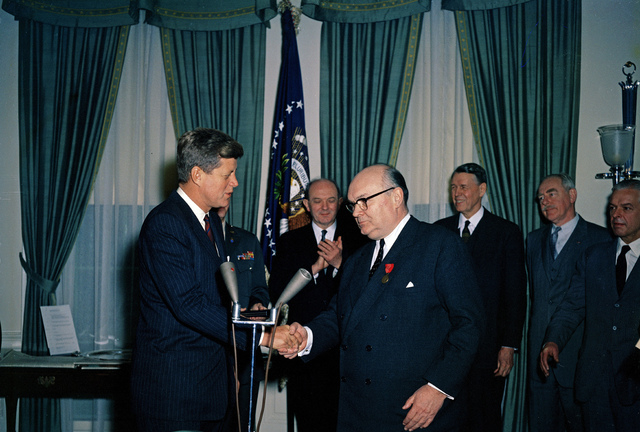
Leave a comment